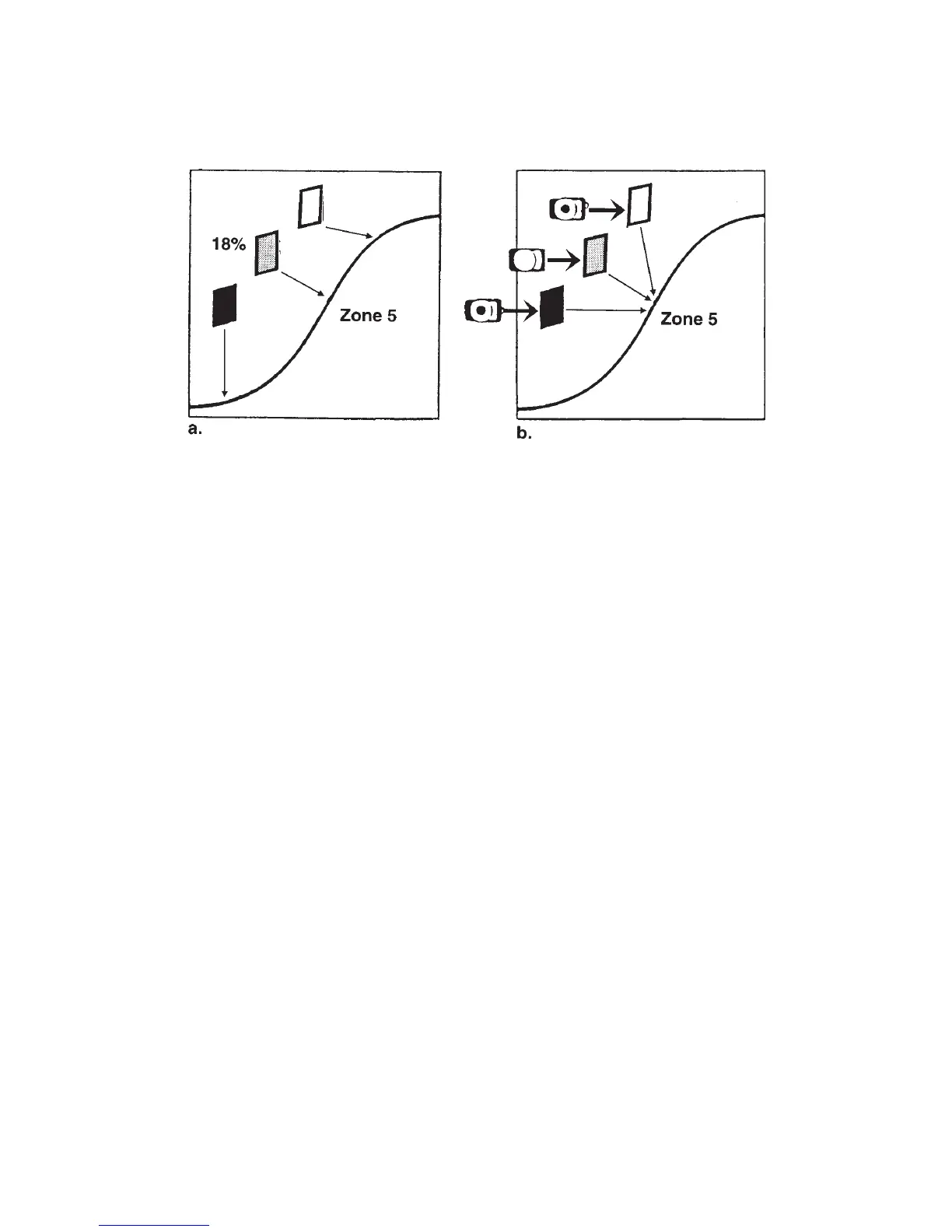278 THE HASSELBLAD MANUAL
must decide which color or brightness value is correct and point the meter at this particular
area or make an adjustment in the lens setting when measuring a brighter or darker area.
Light Refl ectance and Gray Tones
The measuring cell in all refl ected meters, handheld or built-in, is adjusted at the factory for
an 18% refl ectance value. The meter reading is perfect only if the meter is pointed at a subject
area that refl ects 18% of the light, such as a graycard or a green fi eld. A brighter subject area
refl ects more light and if this reading is used on the camera, the image will be underexposed.
We need to increase exposure by setting the EV to a lower value (to EV 9 or 10 instead of 11),
or open the lens aperture (to f/5.6 or f/8 instead of f/11). When measuring darker subjects, do
the opposite. Make the same adjustments in the Zone mode of the 205 camera, setting it to
zone 3 or 4 for darker subjects and to zone 6 or 7 for brighter ones.
The color chart (Figure 15-5) shows the colors that have 18% refl ectance values or zone
5 values, in the center column marked as 0 on top and zone 5 at the bottom. The colors that
require a one stop increase in exposure are in column 1. The colors where you need to
increase exposure by two f stops are in column 2. The colors that need a 1 reduction are
in column 1 (see Figures 15-6 and 15-7).
METERING APPROACHES WITH BUILT-IN AND REFLECTED EXPOSURE METERS
Setting the exposure meter or camera for the proper ISO value is naturally the fi rst step in
using any exposure metering system for fi lm or digital work. Whether you make a meter read-
ing with a refl ected or built-in meter, start by evaluating the subject or scene and see whether
Figure 15-4 The Zone System exposure principle. Lens settings, based on a refl ected meter
reading of 18% gray, record this middle gray tone as zone 5. A refl ected meter pointed at
white records white also as a zone 5 middle gray and does the same for black (b). For correct
exposure, only middle gray should be recorded as zone 5. To place white and black at the
ends of the curve (for example, as zones 1 and 9), you must make adjustments in the refl ected
meter readings (a).

